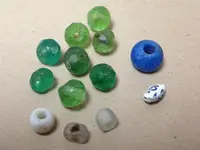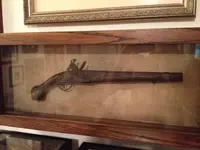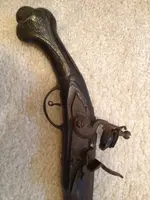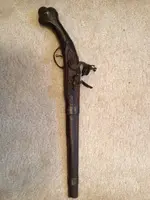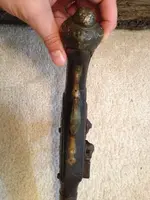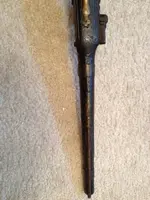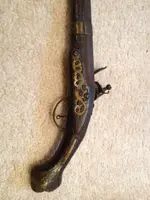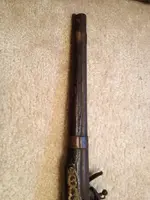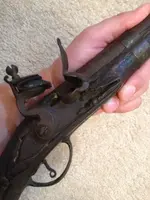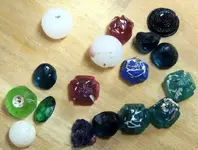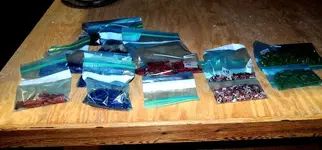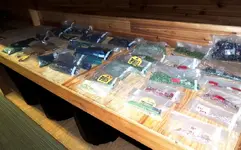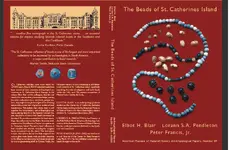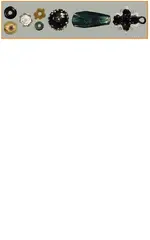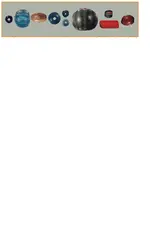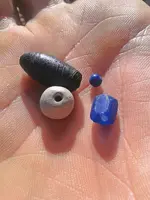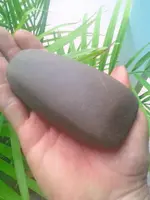I have seen beads dug in the everglades during the early 1960's supposedly originating in Portugal and dating from 1400A.D and into 1500 A.D.. At the time I was told these beads were valued at $300 each (in 1977). Also, I was told these beads were supposedly made at a town in Europe where glassmaking was kept a secret--so protective that if anyone involved with the process attempted to leave, they were put to death. Most were found in CALOOSA Indian sites which is now within government land. Most of these beads were first received in trade, then eventually seized by this tribe from Mendez along the west Florida Coast. Also, they killed Spaniards and siezed some gold which later was found as far inland as the Ft. Center mound near Lake Okecobee. The Platt family (Florida Pioneers) owned and ranched the land at the time at Lakeport and my father worked for them as a Palmetto Cowman after he got out of service during WW2. When very young, we would drive up old US27 from Miami and spend a weekend visiting them from time to time. About 1961, Nathan Platt took dad and my brother across the pasture to see the old Ft. Center site and the ancient Indian mound. I stayed at his farm and never got to see it. However, I did get to see it in 1977 and used my detector on his land adjacent to the state property. However, by 1977 the mound was now a pond. In 1966 or thereabouts Dr. Sears dug the mound finding some of Mendez's gold re-formed into animal statues and such by the early native tribe (not the Seminoles). Sears wrote a book and if he found early trade beads, it will be in his book. There are other places where similar beads were dug. I worked with a woman in mid-1970's whose family owned property at the Mouth of the Manatee River, which contained a large mound or midden--that site, too produced early contact beads. I found beads digging private property near the Big Cypress Reservation; and, I found beads digging and inspecting archeological sites for my county. However, most of these dated to the nineteenth century and were considered Seminole trade beads. I only have a photo (B&w) of one cobalt trade bead which I placed in an article I wrote for a local historical journal about digging Tequesta sites on the Eastern fringes of the Everglades. I do not own any glass beads because I gave them to the museum and others to a relative whose husband and son's used to dive on a Spanish wreck off Boca Raton. She was attempting to acquire enough to make a necklace. And last, there was a Seminole village in our county that dated until about 1876. Later, it was a dairy. I could never get permission to dig there even though my grandfather was good friends to the current owner's father. I started a metal detecting club in Broward Co. in 1981 along with the late Larry Aaron. The wife of one of my club members was a private nurse and worked with that family. Therefore, he was allowed exclusively on the property and dug cases of glass beads and drilled coins from the site. I never acquired photos or could study the collection to see if early contact beads were found on the site; However, since the coins dated back to the 1830's, it is possible all beads dated only back to the 1800's. The only beads I now have are clay examples that I dug from a retired Senators property in SW Florida on a bead manufacturing site that I found quite by accident while I was searching for a Seminole War skirmish site. After local archeologists ignored the site which was destined to be dozed down--under instruction from Dr. Milanich from the University--I sank a 2-meter square pit to 70 centimeters in one spot and sent him samples of the material for study. In that one pit I removed over 300 clay beads--most I gave to museums. Thank You for sharing photos of these historic glass artifacts from colonial Florida.
>>>>>>>>>>>>>>>>>>>>>>>>>>>>>>>>>>>>
BTW-- Regarding the Spanish flintlock... I know of a Spanish musket that was dug inland from Mantanzas area. While searching private lumber property with permission and with much Natl Archives research and maps; I located and dug a Seminole War site in No. Fla. during the 1980's which turned out to be an early settlement along the Old Kings Highway. The site was privately owned and after I mapped and dug the settlement site, I was supposed to go explore and search another nearby site I had found in early maps located along a creek. My partner for this dig I had to rely on because I was having transportation problems at the time, so we relied on his truck to get back and forth from south Florida. After the second weekend on the site, he did a double-cross, claimed he was sick and could not make it. However, he did go and brought several others, digging the site bare in my absence, including a pit of early 1830's ceramics which I located the week previous. I was frustrated and never returned to the site after that; and, fortunately, I never told him about the adjacent site along the creek. Since then, I have worked alone or with only one trusted friend--and have been quite successful. Eventually, word got out on the site and a museum began doing digs, shutting it down for everyone else. Because I never told anyone about the site along the creek, it set dormant for another five years. On year six, while digging elsewhere with a new No. Fla. contact, I learned, the site on the creek was now on the internet. He went to that creek site 6 years after I walked away frustrated and he dug a virgin site, recovering much evidence of colonial Florida which included parts to English muskets with regimental numbers stamped upon them. In addition, he found a complete and beautiful Second-spanish occupation musket. It is a beauty, with fancy trigger guard; hammer ornate sideplate, ect. Of course, most of the stock had rotted away. I held it but was not allowed to photograph it. Someday, maybe I can earn his trust and get photos because it ties in directly with the 1800's site I dug nearby and I will publish the site history someday.



